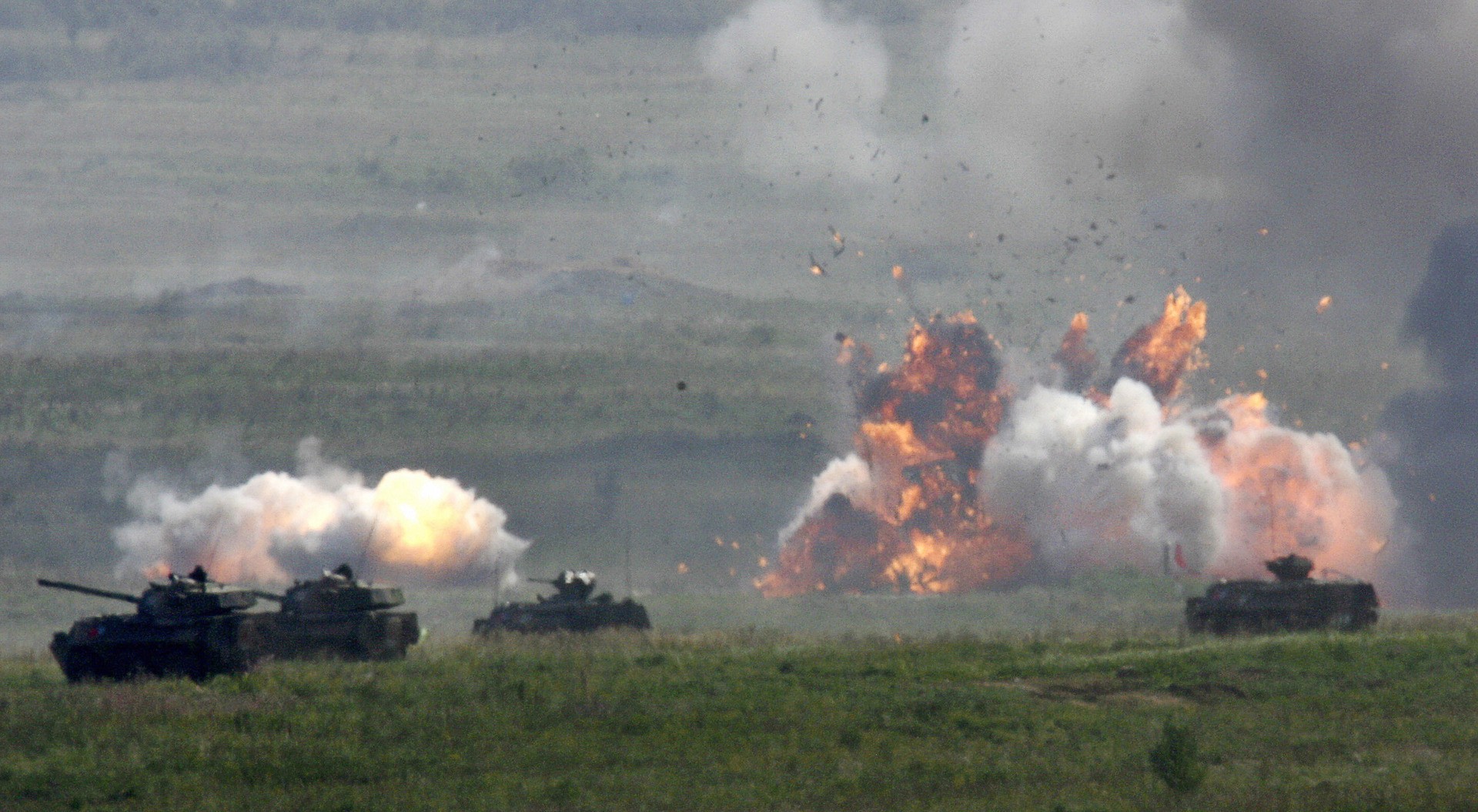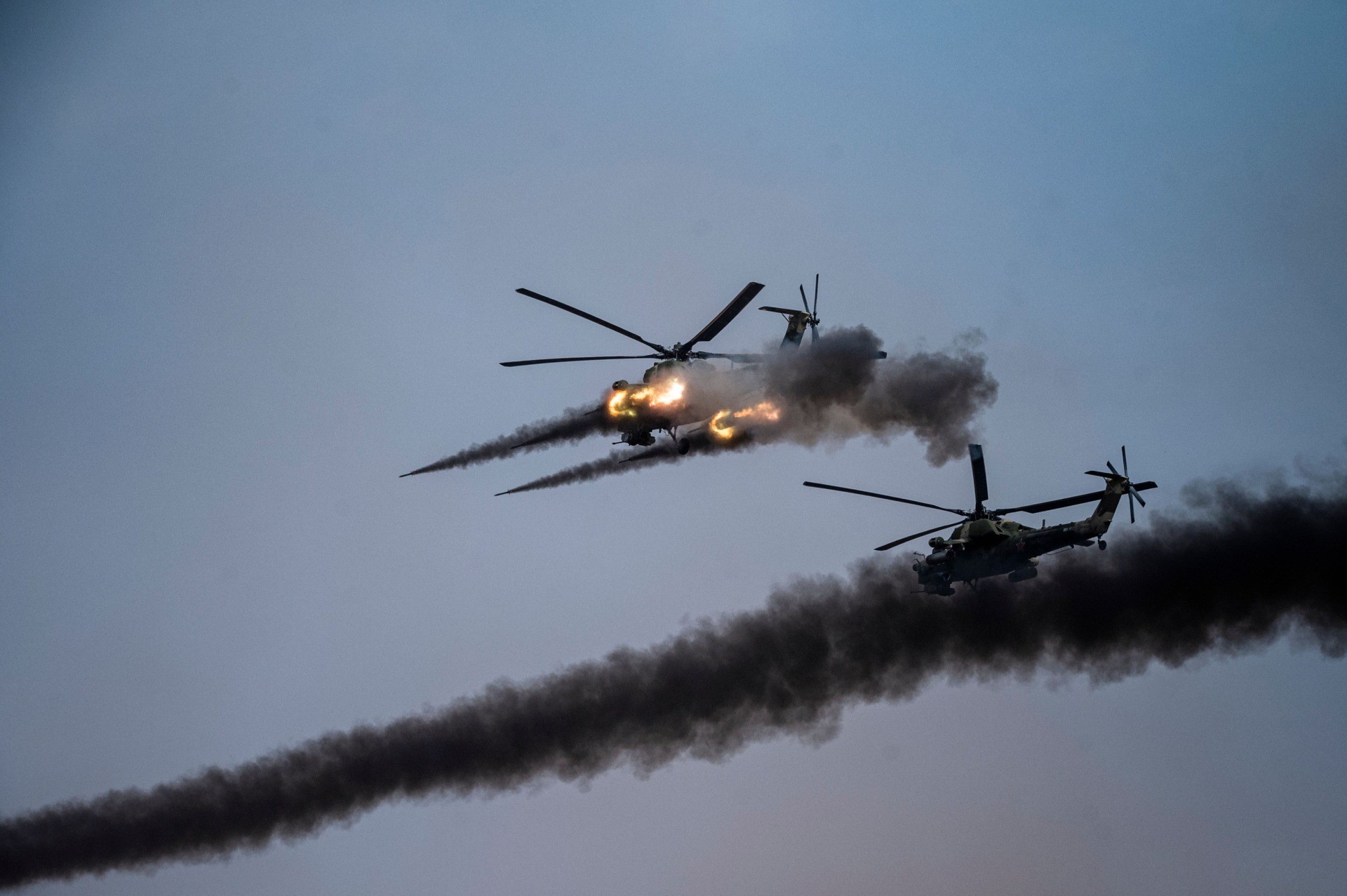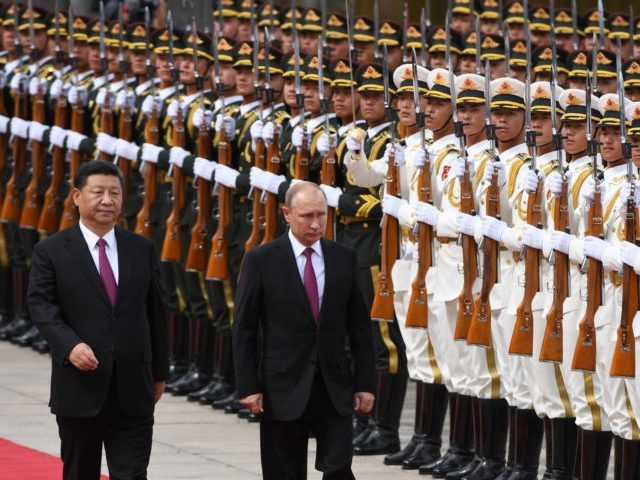The Russian armed forces will join China’s People’s Liberation Army (PLA) for a joint military drill in northern China in early August, China’s national defense ministry announced Thursday.
The exercise, known as “Zapad/Interaction-2021,” is slated to take place at a PLA combined-arms tactical training base in Qingtongxia City, located in northern China’s Ningxia region, from early to mid-August, PLA Senior Colonel Wu Qian, a spokesman for China’s Ministry of National Defense, told reporters at a regular press briefing on July 29.
Russian and Chinese soldiers “will establish a joint command” as part of the drill.
The Chinese participating troops mainly come from the PLA Western Theater Command, while the Russian participating troops from its Eastern Military District,” Wu said Thursday. “A total of more than 10,000 troops will be dispatched by the two sides, along with multiple types of aircraft, artillery, and armored equipment.”
“The two sides’ participating troops will be mixed into teams to make plans jointly and conduct training together, in a bid to verify and improve both troops’ capabilities of joint reconnaissance, search and early warning, electronic information attack, and joint attack and elimination,” according to the PLA colonel.

Tanks and military units of Russia, China and several Central Asian countries participate in war games in Chebarkul (MAXIM MARMUR/AFP via Getty Images)
Wu said the joint military drill aims to consolidate a “new era” of “comprehensive strategic partnership” between Beijing and Moscow, “deepen the pragmatic cooperation and traditional friendship between the two militaries, and further display the determination and ability of both sides to combat terrorist forces and maintain regional peace and security.”

Russian attack helicopters launch rockets during military exercises at the Kapustin Yar range in Astrakhan region, Southern Russia on September 25, 2020 during the “Caucasus-2020” military drills gathering China, Iran, Pakistan and Myanmar troops, along with ex-Soviet Armenia, Azerbaijan and Belarus. (DIMITAR DILKOFF/AFP via Getty Images)
Zapad/Interaction-2021 will promote China and Russia’s joint aim of safeguarding “security and stability in Central Asia as the U.S. irresponsibly withdraws troops from Afghanistan,” China’s state-run Global Times wrote Thursday, citing the analysis of Chinese “military experts.”
Afghanistan’s security situation has significantly deteriorated in recent months amid an ongoing troop pullout from the country by the U.S. and allied North Atlantic Treaty Organization (NATO) forces. The withdrawal is expected to finish by August 31 and signals the end of a 20-year-long joint military operation by the U.S. and NATO. The Afghan War began in late 2001 with the U.S.-led ouster of the Taliban terror group from Afghanistan’s government. The Taliban claimed on July 9 its fighters controlled 85 percent of Afghanistan in the wake of the western military exit.

Afghan Taliban militants and villagers attend a gathering as they celebrate the peace deal and their victory in the Afghan conflict on US in Afghanistan (NOORULLAH SHIRZADA/AFP via Getty Images)
The Taliban has launched strategic military efforts to regain even more control of Afghan territory in recent weeks. The often violent campaigns have sent Afghan government troops and civilians rushing toward the country’s northeastern land borders with Central Asia in an attempt to flee Taliban rule.
“Fighting in the northern part of Afghanistan prompted over 1,000 Afghan government troops [to] retreat to Tajikistan under pressure of [the] Taliban … in the early hours of July 5, after over 300 Afghan troops had retreated to Tajik territory on Saturday [July 3] and 94 others on Sunday evening [July 4],” Russia’s Interfax News Agency reported July 5.
Tajik government officials said two-thirds of Tajikistan’s 843-mile-long border with Afghanistan was “under Taliban control” on July 7. The ministers said they were “already providing Afghan refugees with food and shelter” and anticipated an additional “influx of refugees to enter the country.”
Tajikistan asked the Russian-led Collective Security Treaty Organization (CSTO) for assistance in securing its border with Afghanistan on July 7. The CSTO is a military alliance of former Soviet republics. Russian Foreign Minister Sergei Lavrov responded to Tajikistan’s plea for military aid on July 7, saying the Russian Armed Forces would “honor our commitments” to the CSTO “if Tajikistan is attacked.”
“Moscow and Dushanbe are allies under the Collective Security Treaty, and Russia has a military base in Tajikistan,” Lavrov added, seeming to indicate Russia’s readiness to assist Tajikistan militarily if needed.
Russian President Vladimir Putin spoke with Tajikistan President Emomali Rakhmon via telephone July 5 to discuss ” the complex situation on the Tajik-Afghan border prompted by the escalation of armed confrontation in Afghanistan,” according to a press release by the Kremlin. During the conversation, Putin “reaffirmed [Moscow’s] determination to provide all necessary support to Tajikistan, both bilaterally and within the framework of the Collective Security Treaty Organization [CSTO].”
“In the last week, the Taliban have overrun areas [of Afghanistan] bordering five countries — Iran, Tajikistan, Turkmenistan, China and Pakistan,” Reuters reported July 8.
Chinese Defense Minister Wei Fenghe met with his Russian counterpart, Sergei Shoigu, in Dushanbe, Tajikistan, July 28 as the two attended a meeting for defense ministers of Shanghai Cooperation Organization (SCO) member states.
“Both Wei and Shoigu mentioned the changing situations in Afghanistan and Central Asia, as well as the importance of safeguarding regional security and stability,” the Global Times reported July 29.
The SCO is an economic and security bloc uniting Central and South Asia. Russia and China lead the SCO as an Eastern counterweight to NATO.

COMMENTS
Please let us know if you're having issues with commenting.